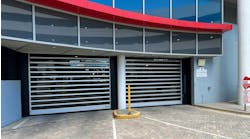Thomas Edison, George Westinghouse, Nikola Tesla – these were the major players in the War of Currents over a century ago, waged over whether electricity should be distributed via direct current (DC) or alternating current (AC).
If a new battle emerges in the 21st century, the names involved are perhaps equally iconic – Facebook, Apple, and Hewlett-Packard (HP).
The AC proponents clearly won the war of the 1880s, but in the data center arena, whether there is a clear winner or just a temporary leader remains to be seen. It’s possible the two technologies aren’t opponents at all.
Disputing Claims
The logic behind considering DC is because utility AC power ultimately must be converted to DC for use by IT equipment. Because stored energy systems (batteries, flywheels, etc.) and renewable sources also provide DC power, a DC power architecture would require fewer power conversions from grid to chip.
This logic led to initial claims, starting around five years ago, that a DC power architecture could improve energy efficiency anywhere from 8-28%.
However, providers of AC systems responded by focusing on improving efficiency, and recent reports from Schneider Electric and The Green Grid suggest that efficiency gains today are closer to 1%.
“The DC discussion has shifted to space savings and increased reliability, and we’re investigating those claims now too,” says Kevin Brown, vice president of data center global offer and strategy at Schneider Electric.
Because DC would require less conversions and thus fewer components to perform them, these claims arise out of similar logic. But whether the improvements are significant is unclear.
“We make breakers that support DC and if the market shifts significantly to DC, we’ll support that trend,” Brown adds. “But because of the general unfamiliarity and unknowns, we haven’t pursued the DC market heavily yet.”
Market Obstacles
Although some early adopters like Facebook, HP, and Intel are incorporating DC into their systems, there are several questions about the technology.
“Everyone and their grandma knows a little about AC just because they plug things into the wall,” says Brown. “Standards for DC aren’t completely in place. DC systems are far from ubiquitous like AC is.”
The EMerge Alliance, a proponent of DC power use, plans to announce the forthcoming Data and Telecom Center standard, which is a significant step in helping to specify DC systems in data centers.
The new standard creates an integrated, open platform for power, infrastructure, peripheral devices, and control applications to facilitate the hybrid use of AC and DC power within data centers and telecom central offices.
“That’s what everybody’s been waiting for,” says Mark Baldwin, president of Direct Power Technologies, Inc., a provider of 400V DC systems. “DC equipment is becoming UL listed too, so we’re looking at a very robust time.”
Only time will tell whether these recent developments will initiate the next battle in the War of Currents or a resolution to it.
“The big missing link is a lack of major OEM off-the-shelf DC equipment,” says Mark Murrill, senior marketing manager at Emerson Network Power, a provider of both AC and DC technology. “Will some fraction of data centers be DC in a few years? I think so, but a lot of that will depend on the availability of the equipment.”
That piece of the puzzle could be falling into place as well. “The servers and components are out there, and they’re supported,” says Baldwin.
Widespread DC artillery along with a standards committee cavalry might enable DC proponents to get back in the fight.
“With EMerge providing the standards, we can go to the front lines,” Baldwin says.


